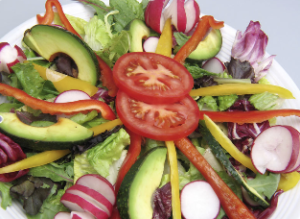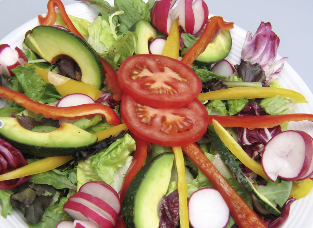Remember, when we talk carbs, we are talking about True Carbs – fruits, veggies, groats and wild rice or things that can be eaten raw. You want to make sure that what you consume right after your event can easily be digested and, therefore, used. This way your body will immediately start working on filling the tank of the nutrients you used during your event. As we discussed before, your body will use glucose as the primary fuel source so it makes sense to refuel with that first. Glucose = Carbs. True Carbs!
TIMING. It’s very important!
Research shows that we have a window of about 30 minutes to get the carbs in to allow the body to top up its depleted glucose. After that your body can actually use the protein in your muscle to refuel. This process is called catabolism. THIS IS NOT GOOD!!!
Catabolism is when you are actually eating your own tissue and that’s not much different than cannibalism. REALLY NOT GOOD! Either way, we are pretty sure that’s not the result you are looking for from exercise.
Getting the carbs in stimulates the production of insulin which aids in the production of muscle glycogen. Adding a little protein can nearly double this response. The ultimate ratio for this uptake is 4 to 1. That’s 4 parts carbs and 1 part protein. Since timing is crutial its important to look at how fast your body can get these nutrients. Unfortunately, most trainers and nutrition experts still recommend getting the “carbs” from some highly refined food like white bread, even cookies. Hopefully, by now, you understand that these processed foods take a long time to break down and rob you of your enzymes. Be smart and get True Carbs.
Replacing the lost fluids and electrolytes is equally as important and the timing is also very important. In a perfect world, you would weigh yourself pre and post event, do a few calculations and drink that much fluid containing the calculated amount of electrolytes. While that is an awesome approach, it may not be realistic… so we suggest a couple of other options when it comes to fluid. Obviously, consume fluids while performing the event. Exactly how much will be determined by the event. A great way to determine if you are hydrating properly is by the color and timing of your urine.
- If its dark yellow, you didn’t drink enough and,
- If you don’t have to pee within a ½ hour of your event, you didn’t drink enough.
Based on what we’ve just said in this paragraph, it seems smart that we should be ready with a post event smoothie to consume after the event and within the 30 minute window. Once the 30 minute window is taken care of then you can think about getting in a little more protein to repair the muscle breakdown that happened during the event or workout. That window is open for up to 48 hours – so there is plenty of time.
What should you drink?
Well, it turns out that nature has provided us with the perfect choice once again. Coconut water contains 9 grams of carbohydrates and 2 grams of protein per serving. That looks pretty close to a 4:1 ratio. Some of us can’t even think of eating following a strenuous workout or event but chances are within the 30 minute time frame we can get a drink into our body. A smoothie containing the coconut water along with some frozen organic berries and a scoop of raw vegan protein powder is the ultimate post event nutrition choice.
Don’t have time to make a smoothie? Then an apple with peanut butter is also a great choice. A medium sized apple has 25 grams of carbs and ½ a gram of protein. One Tbsp of peanut better has 4 grams of protein. That’s pretty close to our 4:1 ratio again.
Oh, and by the way, coconut water just happens to be the perfect electrolyte supplement. Any event lasting longer than an hour and our water bottles are filled with coconut water.

The bigger meal to help with repair of the muscle should have lots of green leafy veggies because they are loaded with the amino acids your body is looking for. People always ask us where we get our protein since we eat a primarily raw fruit and veggie diet. Our answer is always green leafy veggies.Think about what the cow eats to make all of its muscle. What about the strongest primate, the silverback gorilla? Green leafy veggies! Meat is not the only protein source. And what about Whey Protein? It’s a waste product of the dairy industry. Neither of these are very digestion friendly. Now we certainly don’t want to tell you that you should go vegan (o.k. we do) but we would really like you to try and get 80% of the volume of your food from raw fruit and veggies. So a great meal following a workout would be a large salad with a small piece of fish or meat. Volume wise that would be 80:20.
Train Smart!












No Comments